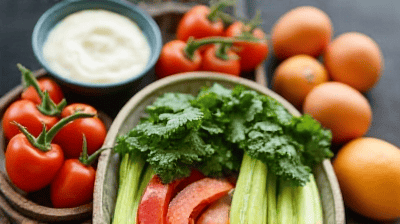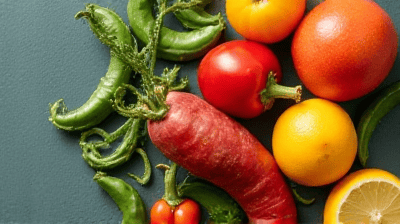Chronic pain and fatty accumulation are two prevalent health issues that affect millions of people worldwide. Chronic pain can stem from various sources, including arthritis, fibromyalgia, and other inflammatory conditions, while excess fatty tissue can contribute to ailments such as obesity, diabetes, and cardiovascular disease. One effective way to combat both chronic pain and the accumulation of unhealthy fat is through diet. By incorporating anti-inflammatory foods into your meals, you can help reduce inflammation, manage pain, and improve overall health.

Understanding Inflammation
Before diving into specific foods, it is essential to understand what inflammation is and why it occurs. Inflammation is the body’s natural response to injury or infection. It is a complex biological process that involves the immune system, blood vessels, and various cellular reactions to protect the body from harm. While acute inflammation is beneficial and necessary for healing, chronic inflammation can lead to numerous health issues.
Acute vs. Chronic Inflammation
-
Acute Inflammation: This type of inflammation occurs suddenly and is usually short-lived. It often results from injuries, infections, or irritants, prompting the body to heal itself. Symptoms may include redness, swelling, warmth, and pain at the site of injury or infection.
-
Chronic Inflammation: When inflammation persists over an extended period, it becomes chronic. This can happen due to autoimmune diseases, prolonged exposure to irritants, or chronic infections. Chronic inflammation is linked to various health issues, including heart disease, diabetes, cancer, and chronic pain conditions.
The Connection Between Inflammation, Chronic Pain, and Fatty Accumulation
Chronic inflammation plays a significant role in the development of chronic pain and fatty accumulation. When the body is in a state of chronic inflammation, it can lead to tissue damage and heightened sensitivity to pain signals. This can manifest in conditions like arthritis, where joint inflammation results in pain and stiffness.
Fatty accumulation, particularly visceral fat (the fat stored around organs), is also influenced by inflammation. As fat cells expand, they can release pro-inflammatory substances known as cytokines, exacerbating inflammation. This creates a cycle of increased inflammation and additional fat accumulation, significantly impacting metabolic health and overall well-being.
The Role of Diet in Managing Inflammation
Diet plays a crucial role in the development and management of inflammation. Certain foods can promote inflammation, while others can help alleviate it. By choosing anti-inflammatory foods, you can reduce your risk of chronic pain and fatty accumulation. These foods are typically rich in antioxidants, omega-3 fatty acids, fiber, and various vitamins and minerals that support overall health.
Anti-Inflammatory Nutritional Components
-
Antioxidants: These compounds neutralize free radicals in the body, reducing oxidative stress and inflammation. Foods rich in vitamins A, C, and E, as well as flavonoids, are excellent sources of antioxidants.
-
Omega-3 Fatty Acids: These healthy fats have been shown to reduce inflammation and support heart health. Sources include fatty fish, flaxseeds, and walnuts.
-
Fiber: A diet high in fiber can help regulate blood sugar levels and support gut health, further reducing inflammation. Whole grains, fruits, vegetables, and legumes are all excellent sources of dietary fiber.
-
Phytochemicals: These naturally occurring compounds in plants provide various health benefits and possess anti-inflammatory properties. They are found in colored fruits and vegetables, herbs, and spices.
-
Probiotics: A healthy gut microbiome is essential for regulating inflammation. Consuming probiotic-rich foods can support gut health and reduce inflammation-related issues.
Anti-Inflammatory Foods to Include in Your Diet
Now that we understand the importance of diet in managing inflammation, let’s explore specific anti-inflammatory foods that can help fight chronic pain and fatty accumulation.
1. Fatty Fish
Fatty fish, such as salmon, mackerel, sardines, and herring, are rich sources of omega-3 fatty acids. Omega-3s are known for their anti-inflammatory effects and can help reduce joint pain and stiffness in people with arthritis. Aim to include fatty fish in your diet at least two times a week.
2. Leafy Greens
Leafy greens, such as spinach, kale, and Swiss chard, are loaded with antioxidants, vitamins, and minerals. They contain high levels of vitamin K, which has been shown to reduce inflammation and may help alleviate chronic pain. Adding salads or cooked leafy greens to your meals can provide significant health benefits.
3. Berries
Berries—including blueberries, strawberries, raspberries, and blackberries—are rich in antioxidants and phytochemicals known for their anti-inflammatory properties. Regular consumption of berries has been associated with reduced markers of inflammation and improved heart health.
4. Nuts and Seeds
Nuts and seeds, such as walnuts, almonds, flaxseeds, and chia seeds, are excellent sources of omega-3 fatty acids, healthy fats, and fiber. These nutrient-dense foods can reduce inflammation and provide sustained energy. A handful of nuts or seeds can be a great addition to salads, smoothies, or yogurt.
5. Olive Oil
Extra virgin olive oil is a staple in the Mediterranean diet and is known for its health benefits. It is rich in monounsaturated fats and contains oleocanthal, a compound that has properties similar to NSAIDs (non-steroidal anti-inflammatory drugs). Incorporating olive oil into your cooking and dressings is an easy way to reap its anti-inflammatory benefits.
6. Turmeric
Turmeric contains curcumin, a powerful antioxidant with potent anti-inflammatory properties. Curcumin can help alleviate chronic pain, particularly in conditions like osteoarthritis and rheumatoid arthritis. Adding turmeric to your meals or drinking turmeric tea can enhance your anti-inflammatory diet.
7. Ginger
Ginger is another spice with anti-inflammatory and analgesic properties. Research suggests that ginger may help reduce muscle pain and soreness after exercise. You can consume ginger in various forms, including fresh, powdered, or as a tea.
8. Garlic
Garlic is a flavorful addition to many dishes and is known for its health benefits. It contains sulfur compounds that may help reduce inflammation and boost heart health. Incorporating garlic into your cooking can enhance the flavor of meals while providing anti-inflammatory support.
9. Whole Grains
Whole grains, such as quinoa, brown rice, and whole wheat, are rich in fiber and other nutrients that promote overall health. Fiber helps to regulate blood sugar and supports gut health, both of which can contribute to lower inflammation levels.

10. Avocados
Avocados are a great source of healthy fats and contain compounds that reduce inflammation. They are also rich in potassium, which can help lower blood pressure and support heart health. Adding avocados to salads, smoothies, or simply enjoying them on whole-grain toast can enhance your diet.
11. Beans and Legumes
Beans and legumes, including lentils, chickpeas, and black beans, are high in fiber and protein. They can help lower inflammatory markers and support healthy weight management. Incorporating these foods into soups, salads, or main dishes is a delicious way to boost your intake.
12. Dark Chocolate
Good news for chocolate lovers: dark chocolate (with at least 70% cocoa content) is rich in flavonoids and antioxidants. Consuming dark chocolate in moderation can provide anti-inflammatory benefits while satisfying your sweet tooth.
13. Green Tea
Green tea is renowned for its numerous health benefits, including anti-inflammatory properties. It contains polyphenols and catechins, which can help reduce inflammation and protect against chronic diseases. Drinking green tea regularly can be a soothing and healthful habit.
14. Cruciferous Vegetables
Cruciferous vegetables, such as broccoli, Brussels sprouts, and cauliflower, are packed with vitamins, minerals, and phytochemicals that can help reduce inflammation. Aim to include these vegetables in your meals several times a week for maximum benefit.
15. Sweet Potatoes
Sweet potatoes are a nutrient-dense food that provides fiber, vitamins, and antioxidants. They have a low glycemic index, making them an excellent carbohydrate source for managing blood sugar levels. Including sweet potatoes in your diet can support weight management and reduce inflammation.
16. Beets
Beets contain betalains, antioxidant compounds with anti-inflammatory properties. They are also rich in nitrates, which can improve blood flow and support heart health. Roasted or pickled beets can be a colorful and nutritious addition to salads.
17. Fermented Foods
Fermented foods, such as yogurt, sauerkraut, kimchi, and kefir, contain probiotics that promote gut health. A healthy gut microbiome is essential for managing inflammation and may reduce chronic pain. Incorporating fermented foods into your diet can support your overall well-being.
18. Mushrooms
Certain mushrooms, including shiitake, maitake, and reishi, have anti-inflammatory properties and can support the immune system. Consider adding mushrooms to stir-fries, soups, or salads for additional nutritional benefits.
19. Coconut Oil
Coconut oil is high in medium-chain triglycerides (MCTs), which can provide quick energy and support weight management. While it should be used in moderation, coconut oil can be a flavorful addition to cooking and baking.
20. Citrus Fruits
Citrus fruits, including oranges, lemons, and grapefruits, are rich in vitamin C and other antioxidants. They can help reduce inflammation and promote a healthy immune system. Enjoy citrus fruits as snacks, in salads, or as juice.
Creating an Anti-Inflammatory Meal Plan
Incorporating anti-inflammatory foods into your diet doesn’t have to be overwhelming. Here is a sample day of meals that highlights some of the foods discussed:
Breakfast:
- Overnight oats made with rolled oats, almond milk, chia seeds, and topped with berries and a drizzle of honey.
Snack:
- A handful of walnuts and a sliced apple.
Lunch:
- A spinach salad with grilled chicken, cherry tomatoes, cucumber, avocado, and a dressing made from olive oil and lemon juice.
Snack:
- Carrot sticks and hummus made from chickpeas, garlic, and tahini.
Dinner:
- Baked salmon seasoned with turmeric and ginger, served with quinoa and steamed broccoli.
Dessert:
- A small square of dark chocolate and a cup of green tea.
Lifestyle Changes to Support an Anti-Inflammatory Diet
In addition to making dietary changes, consider adopting the following lifestyle practices to effectively fight chronic pain and fatty accumulation:
1. Regular Physical Activity
Engaging in regular physical activity can help improve circulation, boost metabolism, and reduce inflammation. Aim for at least 150 minutes of moderate-intensity exercise per week, including activities like walking, swimming, or yoga.
2. Stress Management
Chronic stress can contribute to inflammation and exacerbate pain. Incorporating stress-reduction techniques such as meditation, deep breathing, or yoga into your daily routine can help manage stress levels.
3. Adequate Sleep
Prioritizing quality sleep is essential for overall health and inflammation management. Aim for 7-9 hours of restful sleep each night and practice good sleep hygiene.
4. Stay Hydrated
Drinking enough water is vital for overall health and can help manage inflammation. Aim for at least 8-10 cups of water daily, and consider herbal teas as additional hydration sources.
5. Limit Processed Foods
Minimize your intake of processed and refined foods high in added sugars, unhealthy fats, and preservatives. Focus on whole, nutrient-dense foods that support overall health.
6. Avoid Smoking and Limit Alcohol Consumption
Smoking is a known contributor to inflammation and should be avoided. Additionally, limit alcohol consumption, as excessive intake can lead to inflammation and weight gain.
Conclusion
Adopting an anti-inflammatory diet can significantly impact chronic pain and fatty accumulation. By incorporating a variety of anti-inflammatory foods, engaging in regular physical activity, managing stress, and making other positive lifestyle changes, you can reduce inflammation and improve your overall health.
Remember, every individual is unique, and it is essential to listen to your body and adapt your diet and lifestyle to meet your specific needs. Consulting with a healthcare professional or registered dietitian can provide personalized guidance and support in your journey toward better health. By prioritizing an anti-inflammatory lifestyle, you can take significant strides toward relieving chronic pain, maintaining a healthy weight, and enhancing your overall well-being.



